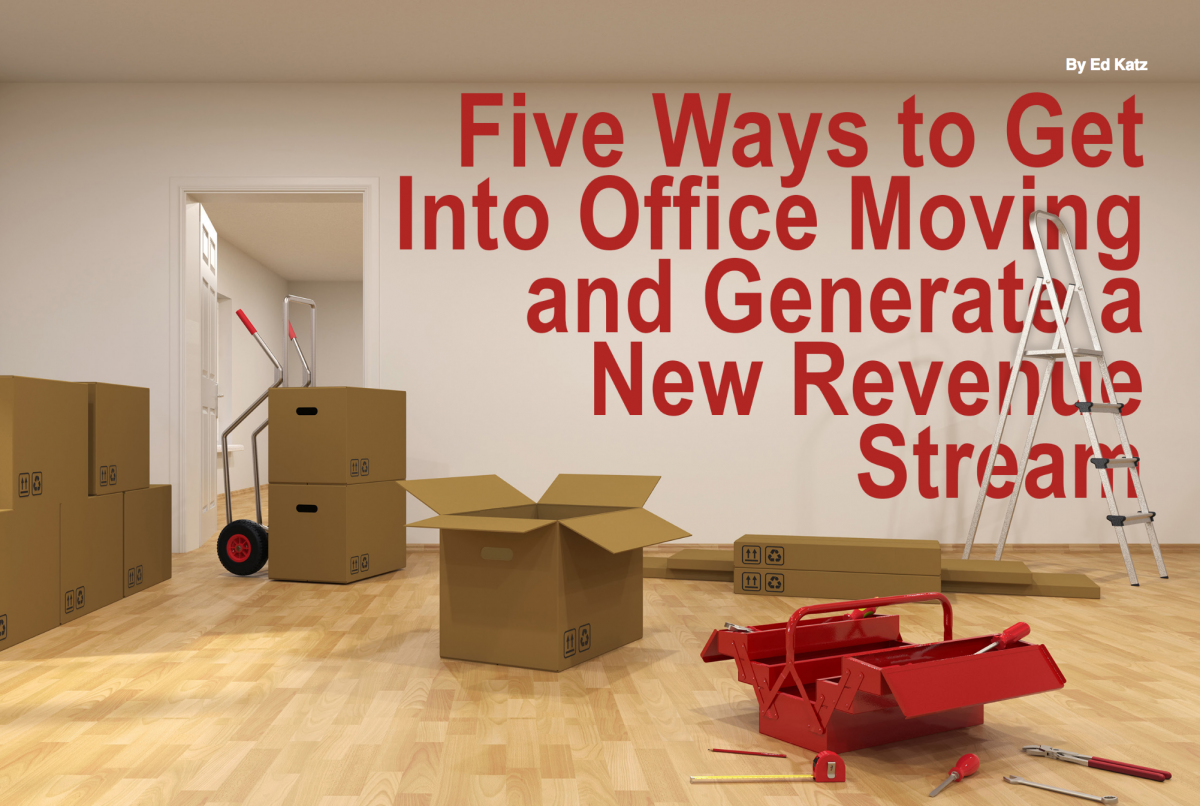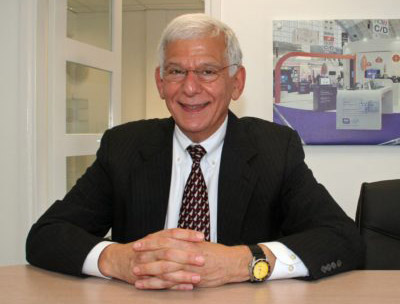If you sell office furniture and you’re not offering commercial moving services, you’re leaving money on the table. Money that someone else is picking up! You’re also inviting a competitor who offers both to steal your office furniture business.
Companies planning a move often need more than furniture—and most prefer to buy multiple services from a single provider. Many customers are crying out for solutions and dealerships that step up stand to snatch a sizable slice of business away from the troubled moving industry. Here’s how you can diversify into office moving—one bite at a time.
1. Contact existing customers and tell them you’re exploring the possibility of expanding your service by offering office moving. Measure their response. Are they happy with their present service providers? Are they excited about your offering office moving services?
2. Don’t jumpstart your office moving by hiring a big O & I (Office & Industrial) producer or sales person from a mover so that he’ll bring his “book of business” (big clients) with him to you. Naïve movers, who often follow this strategy because it’s easy, soon discover it comes with several pitfalls. Unless your crew is fully proficient in moving office furniture (using a bucket brigade and keeping furniture on the dollies on the floor of the truck), your moves probably won’t finish on time for the price quoted. If they don’t, your tired or fatigued movers can have workers’ comp issues as well as cause damage to furniture, computers, copiers, and real estate property such as doors, elevators and walls. Another problem with hiring big O & I producers from a mover is that once they’re on board, many typically pressure you to lower your rates or risk losing the book of business they brought with them. If you do, you’ll be in the sales rep’s revenue generation business instead of the moving business. Your rep will make his commissions and you’ll be left making little or no profit.
3. Diversify into office moving by building it from the ground up. Start by offering move services to your existing clients. Only after you master the process should you branch out into the general market. It’s easy to get a foot in the door making relocation calls because companies moving need bids. Once you’re in, they’ll be more receptive to letting you fill their furniture needs.
4. There are two ways to learn the business. The worst is to follow my experience by attending the terrible School of Hard Knocks, whose motto is: “I didn’t know that I didn’t know”. When I first started more than 40 years ago, I used the same residential formula for estimating office moves that most inexperienced office movers use today. This formula was worthless! It didn’t work. I then copied other “office” movers’ formulas of bidding per truckload. It was even worse than using the residential formula because we bid the competition and not the jobs. Moves still didn’t finish on time for the price quoted and therefore we had trouble collecting what we billed.
A better way to diversify into office moving is to enroll in formal training so that you learn the best practice methods for sales, customer service, and all aspects of operations. You could hire an O & I consultant or search the web for training.
5. Don’t chase large moves with high-revenue dollars—at least not right away. Instead, build your brand, get your experience and make good profits by doing smaller moves. Bid on internal moves (one side of the floor to the other or floor to floor within the same building) or one or two-truck “load and go” moves.
This business model will enable you to charge a premium price when you render a premium service. Even if you charge double the competition on smaller moves, you’ll get the jobs if you consistently estimate accurately, finish on time for the price quoted and minimize the risk of damage.
Smaller moves have other benefits, too. It’s easier to control the customer on a two-truck move where fewer movers compete than a 30-truckload move that everyone wants to bid on. Less competition is one of the reasons smaller jobs can have much higher profit margins than larger ones. Even if your bid is double in percentage terms on a smaller move, the actual double dollar amount can be perceived as inconsequential to the prospect.
Another plus for you is that smaller moves are much more flexible to complete at your convenience, whereas larger ones are not. What happens if, at the last moment, the office space is not finished and the move must be postponed? If it’s a large move and you have reserved all your resources for that job, you could end up with a black hole in your schedule. In other words, delay could result in little or no business for the previously scheduled weekend of the now postponed move. If your large customer announces that he must go the following weekend, you might already be at capacity for that date. Superimposing his large move on top of your existing full schedule could be disastrous.
On the other hand, if it’s a small move and it needs to be rescheduled, you’ll generally have flexibility. You’ll likely be able to reschedule their smaller move when it doesn’t disrupt your existing schedule.
Finally— Cash is King. Large moves can tie up your capital, draw down your line of credit and raise your cost of sales with the extra interest you pay on bank loans. With small moves, it’s easy to get a large down payment and/or make them cash on delivery. Business 101 preaches the importance of avoiding a negative cash flow. Unless a company can convert its accounts receivable into cash quickly, it could fail and go out of business even if it has a positive net worth.
For the 24 years I was at the helm of Peachtree Movers in Atlanta, Georgia, we called ourselves a “boutique in the moving industry”. We chased the smaller moves and rarely bid on the giant ones. Did we ever do large moves? Of course, we did. When our small clients expanded, we grew with them. We did hundreds of thousands of square foot moves for Dun & Bradstreet, Rockwell, MCI, JLL, Travelers, and others. However, we focused on the smaller moves that were rarely price sensitive. This business model gave us a 50% gross profit margin after subtracting our labor, truck and equipment depreciation, packing material costs and sales’ commissions.
The future for office moves looks very promising. With the economy heating up, more companies are growing and moving because they need more office space. Faced with attracting and retaining top employees, companies want nicer facilities, too. All this means there are tremendous opportunities for you in the office moving arena, so why not exploit them?
Ed Katz is the president of the International Office Moving Institute (IOMI®) based in Madison, MS. He can be reached at edkatz@officemoves.com, 404-358-2172. His website is www.officemoves.com
From the September 2018 issue of INDEPENDENT DEALER










